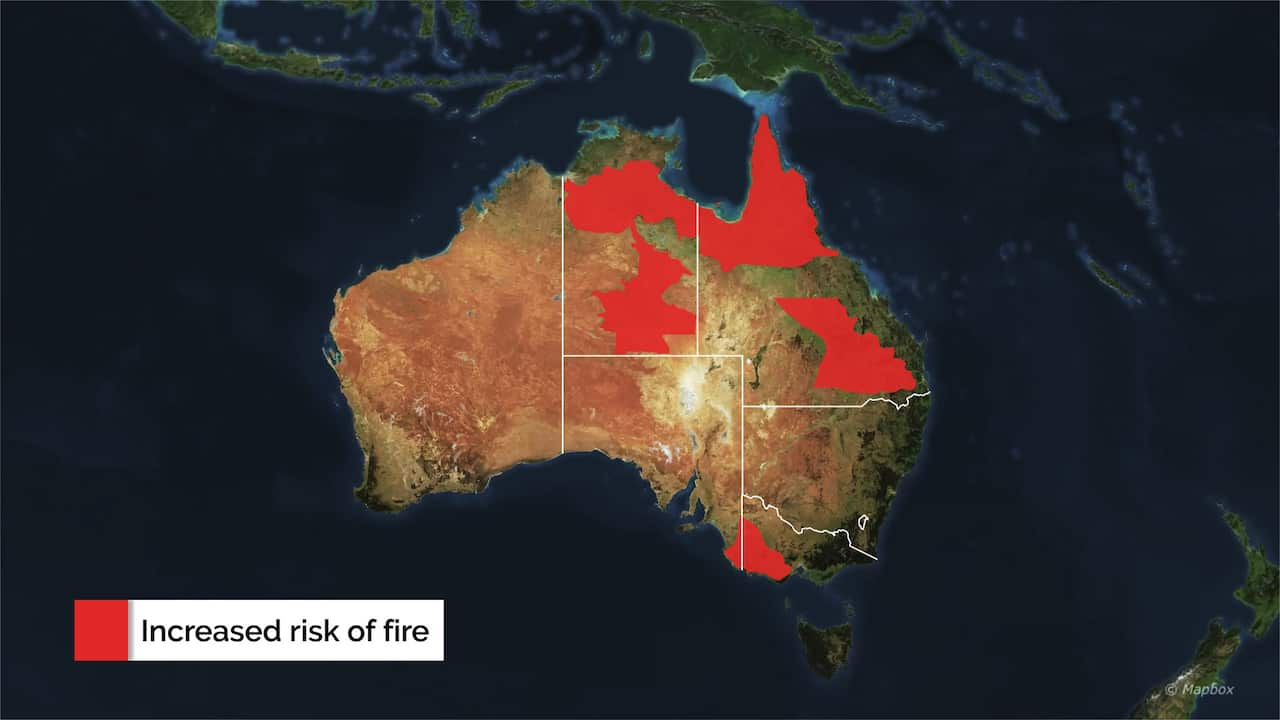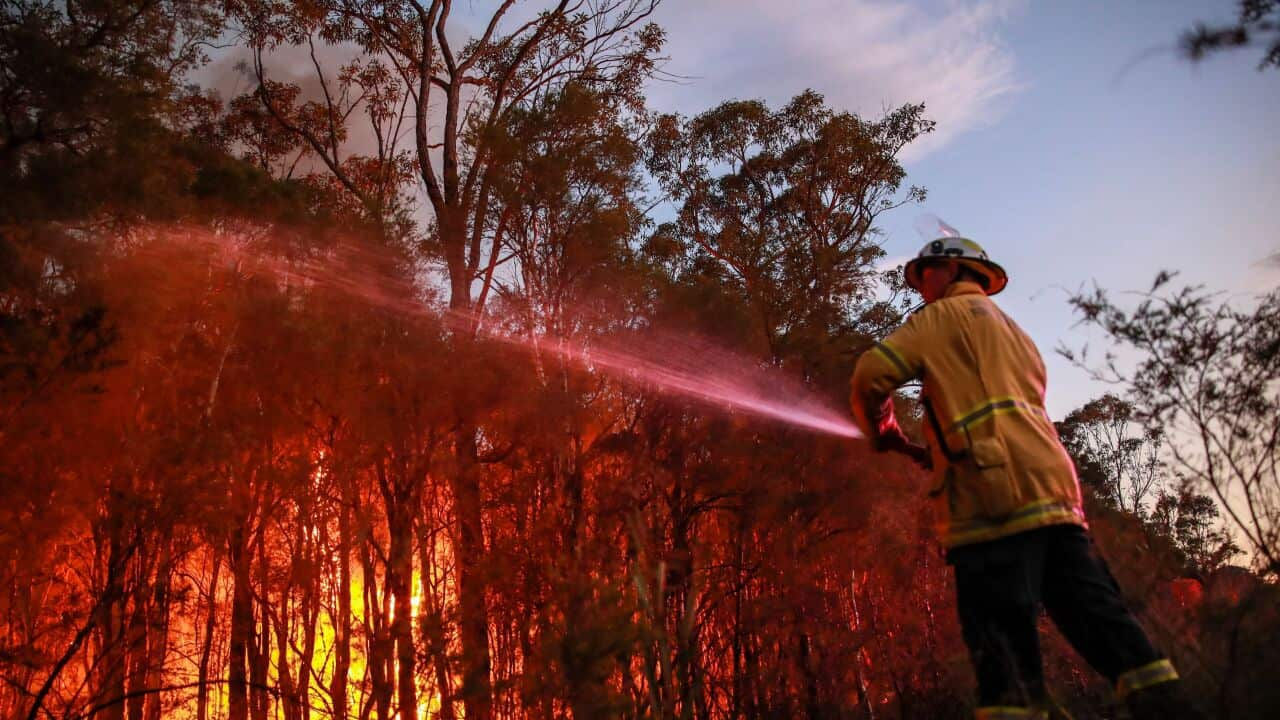Key Points
- Parts of four Australian states and territories will face a higher threat of bushfire during spring.
- Warmer temperatures, drier conditions and “curing events” have been factored into the bushfire outlook for spring.
- The risk of bushfires in ACT, Tasmania, and Western Australia is expected to be ‘normal’.
These have been mapped out by state and territory within the Seasonal Bushfire Outlook for Spring 2024.
The northernmost states
A curing event through late winter led to extensive frosts and sustained intense winds drying out grasslands and open forested areas of central and southern Queensland.

The highlighted areas are those with an increased risk of fire in the coming months according to the Seasonal Bushfire Outlook Spring 2024. Source: SBS News
According to the outlook, “elevated curing activity” is likely to continue in the state during spring, with forecast above-average daytime temperatures expected for the majority of the state.
Landholders across the Territory are urged to ensure their fire management plans are current and in place and be aware that fires are carrying overnight.
Easier for fires to start and spread
Victoria’s far west and south-west not only had a drier than usual winter but a notably dry autumn and winter period.
The seasonal outlook noted a substantial amount of dead and dry plant material within forests would “make it easier for fires to start and spread”.
Warm and dry
In the ACT, fire agencies and land managers will conduct prescribed burning during spring to mitigate potential hazards.
In the west, forecast spring rainfall is expected to further soil moisture recovery from the severe rainfall deficiencies experienced in the southern part of the state before August.
Wet conditions keep threat in usual range
With wet conditions expected to continue, the potential for bushfires in the state will remain within a ‘normal’ range during spring.
Be prepared across Australia
According to the National Council for Fire and Emergency Services, the seasonal outlook is not intended as a prediction of where and when bushfires will occur but as a means to identify areas of increased risk of fire “so communities are aware and primed to take appropriate action”.
The body is urging Australians to remain alert and if they have not done so already, to prepare their properties and maintain them throughout this period ahead of the hotter months.
